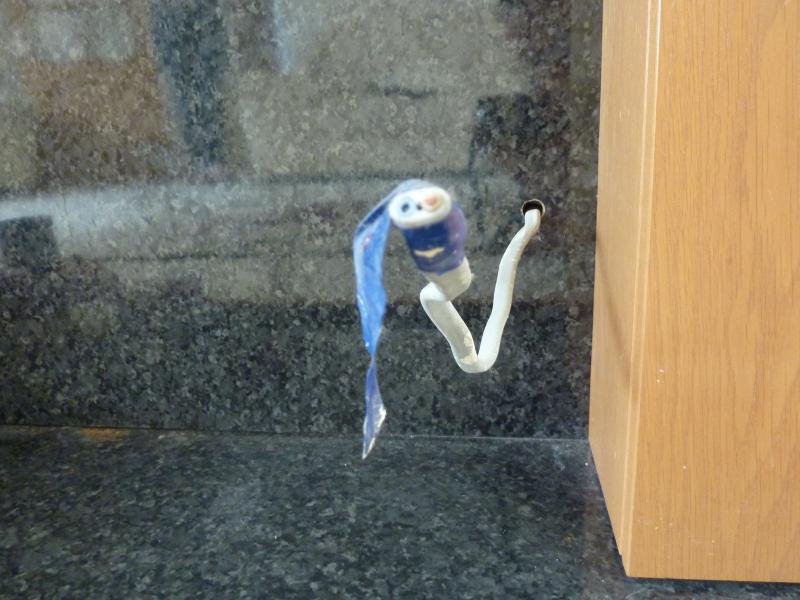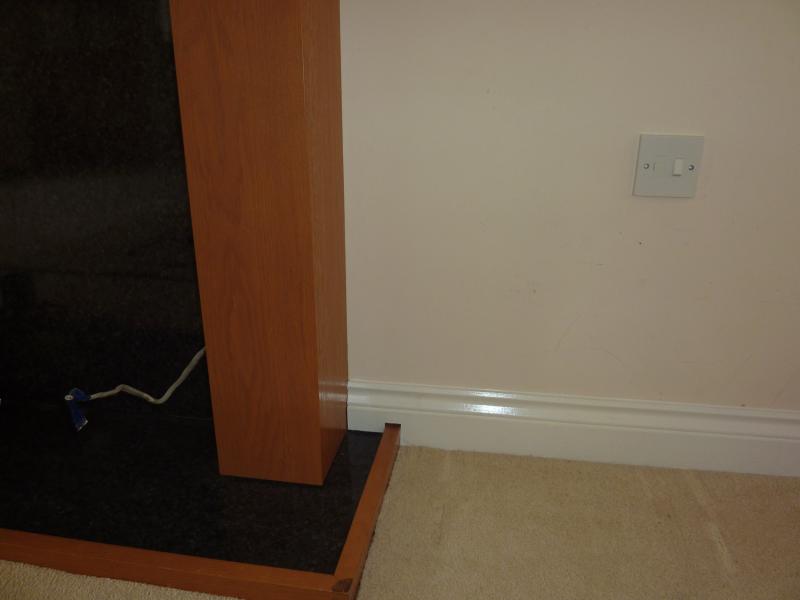Hello everyone. I'm just starting a project where I'd like to replace an existing electric fire place with a new tv wall (a false wall into which I'm going to fit a tv and other AV equipment). I'm just wondering how to handle the electrics. The existing fire place has a bare cable coming out of it, where an electric fire would normally be fitted. (It's a new house, this is how the builders left it).
My question is, can I use this cable to fit some new sockets (hidden inside the new wall), so that I can plug in the various bits of equipment? There are six things which will need plugging in (all of them are low power - the total current won't exceed 13 Amps).
Some more information about the cable I want to use as I assume that is important. It is a flat, grey cable, with a blue wire on one side, a brown on the other, and a bare Earth wire in between:
Just to the right of the fireplace is a wall switch, with a fuse:
There's also a double wall socket about two meters to the right of this switch. Am I right in thinking that this switch is a fused switched spur from the double wall socket?
Any advice is much appreciated - thanks very much!
My question is, can I use this cable to fit some new sockets (hidden inside the new wall), so that I can plug in the various bits of equipment? There are six things which will need plugging in (all of them are low power - the total current won't exceed 13 Amps).
Some more information about the cable I want to use as I assume that is important. It is a flat, grey cable, with a blue wire on one side, a brown on the other, and a bare Earth wire in between:
Just to the right of the fireplace is a wall switch, with a fuse:
There's also a double wall socket about two meters to the right of this switch. Am I right in thinking that this switch is a fused switched spur from the double wall socket?
Any advice is much appreciated - thanks very much!



